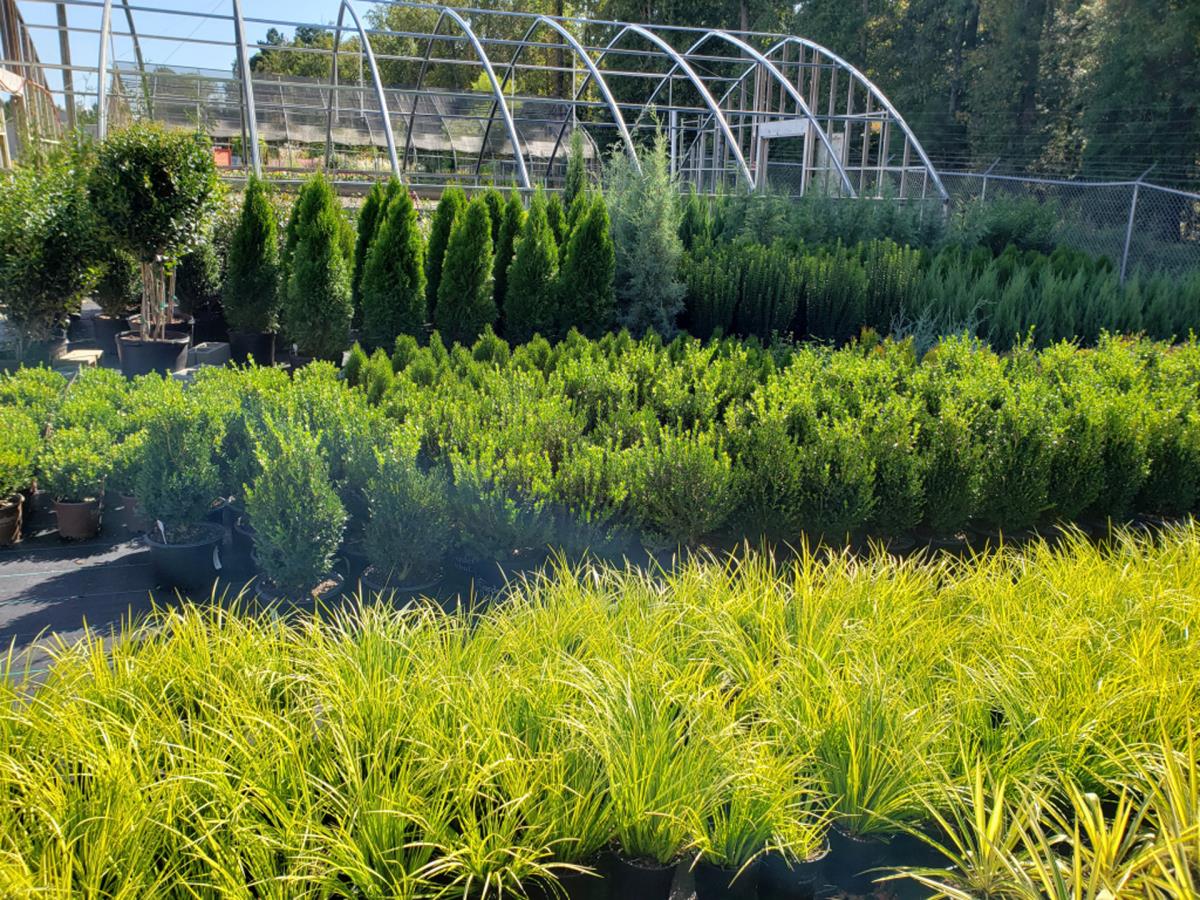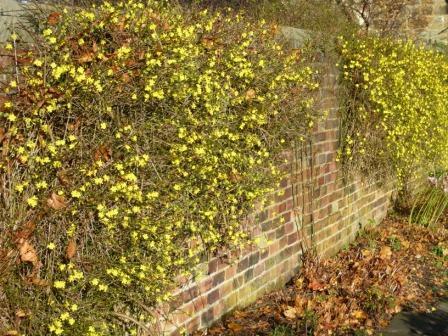 Our evergreen centerpieces for the fall flower rotation have arrived! Golden variegated sweet flag, or “ogon grass” is front and center.
Our evergreen centerpieces for the fall flower rotation have arrived! Golden variegated sweet flag, or “ogon grass” is front and center.
The Myatt team is gearing up for the fall flower rotation, which starts this Monday! In preparation for that, we focused on Acorus gramineus ‘Ogon,’ or golden variegated sweet flag (also called ogon grass) in our training today. These make beautiful centerpieces for fall planters because of their bright chartreuse coloration, something you don’t see too much in the fall and winter. Contrary to the nickname “ogon grass,” sweet flag is not a type of grass, but rather a plant which is completely separate from all other monocots (grass-like plants). For the plant geeks like myself, sweet flag is a particularly fascinating plant–it’s the oldest surviving line of monocots known to science. You could say that Acorus is the ginkgo of grass-like plants. The name “sweet flag” refers to the pleasant aroma the leaves give off when crushed. In medieval times, sweet flag leaves were cut up and scattered on the dirt floors to make them smell better, and ancient Egyptians used Acorus calamus in their perfumes. Native Americans used a native variety of sweet flag, Acorus calamus var. americanus, in ceremonies and medicines. The golden-leaved Acorus g. ‘Ogon’ cultivar is much newer; the natural species are simply green.
Cultivation Tips
As far as cultivation, sweet flag prefers very moist soil, and can actually grow in up to 4″ of water! It’s great for wet, boggy areas, but this particular variety is not native to the US, so avoid planting it in natural waterways where it could spread and become invasive. It certainly does well in planters as long as they are kept moist. It grows well in full sun, but does not like the heat, so afternoon shade is a must here in the south. If it’s too hot and the soil dries out, the leaves will scorch and start to turn brown. Because sweet flag is a little slower-growing, we don’t typically prune it in the late winter, unless there is a lot of wind scorch. Maintenance-wise, think of it more like a sedge than a grass.
ID Tips
Sweet flag looks like a grass or sedge from a distance, but up close there are several key differences:
- The leaves are flat like a grass, but grow in a fan shape at the base. It looks extremely similar to Iris pseudacorus, yellow flag. In fact, the specific epithet, “pseudacorus” actually means “false acorus.” In the 1400’s, several herbal guides confused the plants and had incorrectly labelled woodcuts.
- An easy way to tell sweet flag from yellow flag is in late spring-early summer. Sweet flag does not usually flower unless it’s growing in water, and the flower looks a little like a cattail stalk. Yellow flag has beautiful yellow iris blossoms.
- The leaves do not have a crease in the center like grasses and sedges do.
 Notice the strong fan-shaped base of the leaves.
Notice the strong fan-shaped base of the leaves.